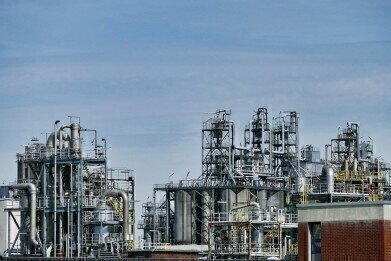Measurement and Testing
What Is Fractional Distillation?
Mar 01 2021
Crude oil is a primary source of the fuel needed to run our vehicles and power our homes. In its natural state, crude oil is a complex mixture of hydrocarbons. Some of these are large, viscous and not very flammable or volatile, while others are smaller, more free-flowing, more flammable and more volatile. Depending upon their size and physical properties, the hydrocarbons are used for different purposes.
A common method of separating these hydrocarbons is called fractional distillation. This involves placing the crude oil in a large receptacle with a fractioning column fitted above it. The column has several condensers attached to it at different heights, allowing for hydrocarbons with higher boiling points to condense at the bottom of the column and those with lower boiling points to condense at the top.
What are the main fractions of crude oil?
In this way, the crude oil is separated out into different parts, or fractions. The whole process works in a similar fashion to how alcohol is made in a whisky distillery, but with the staggered condensers allowing for different hydrocarbons to be removed at different stages of the condensation process. The main fractions that are extracted from crude oil are as follows:
- Bitumen. This solid substance has the highest boiling point and is used for roads and roofs.
- Fuel oil. Crude oil fuel is very viscous and is used in the power stations on board ships.
- Diesel. With a slightly lower boiling point, diesel is used to power cars, lorries and buses.
- Kerosene. Kerosene has a lower boiling point than diesel and is used to power aircraft engines.
- Gasoline. Along with the use of various additives, gasoline powers our cars.
- Refinery gases. The gases with the lowest boiling point are bottled and used in refineries.
Fuels with smaller hydrocarbons are more efficient than those with larger hydrocarbons, since they can flow and ignite more easily. In order to break larger hydrocarbons down into smaller, more efficient chunks, the process of cracking is used. This involves heating the hydrocarbons to extremely high temperatures and passing them over a catalyst (usually made of alumina or silica). This breaks the covalent bonds in the hydrocarbons, causing thermal decomposition and creating alkanes and alkenes, which can be used as the fuels mentioned above or to manufacture plastics.
Cleanliness is key
In its purest form, crude oil contains only hydrogen and carbon atoms. However, organic chlorides can contaminate crude oil during the distillation process. Ironically, this occurs due to cleaning operations in the still, the pipelines or other refinery equipment.
While small concentrations of organic chlorides in crude oil do not pose a problem to the refinery equipment, they can cause severe damage if they are not addressed. That’s why measurement of organic chlorides via ASTM or water extraction is imperative to ensure that the oil remains safe to use in a refinery environment.
Digital Edition
PIN 25.1 Feb/March
March 2024
In This Edition Safety - The technology behind the ION Science Tiger XT - Safety with ammonia and LOHCs as hydrogen carriers Analytical Instrumentation - Discussion on new tribology te...
View all digital editions
Events
Apr 30 2024 Birmingham, UK
May 03 2024 Seoul, South Korea
May 05 2024 Seville, Spain
May 06 2024 Riyadh, Saudi Arabia
May 06 2024 Houston, Tx, USA


















